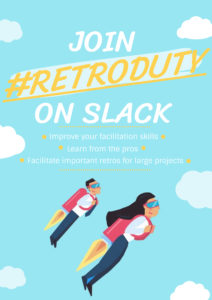- PagerDuty /
- Blog /
- Best Practices & Insights /
- How We Scale Continuous Improvement and Agile Beyond Engineering at PagerDuty
Blog
How We Scale Continuous Improvement and Agile Beyond Engineering at PagerDuty
This piece is co-authored by Roma Shah, Manager, Agile Leadership Team, PagerDuty.
If you’ve worked on a team that has adopted Agile techniques, you’ve probably heard of a retrospective. If not, here’s the TL;DR: A retrospective is a meeting in which a team connects regularly to reflect on what happens throughout a project and continuously improve how they work moving forward.
Most Agile delivery teams at PagerDuty use biweekly team retrospectives to reflect on how things went over the last few weeks, progress made toward release goals, and improvements that can be made moving forward. When used effectively, reflective practices like team retrospectives help teams become self-aware of what’s working well for them and what’s holding them back. And more importantly, teams find ways to work more effectively internally and with the rest of the organization.
As Agile Coaches, we saw firsthand how team retrospectives transformed the way teams work, helping them adapt and overcome challenges. But we weren’t sure how to scale them effectively across PagerDuty. Not all of our delivery teams had their own embedded Agile Coach, and outside of Engineering, continuous improvement practices and reflective techniques weren’t as common. Outside of cloning ourselves, we weren’t sure how to scale these practices. Through trial and error, we eventually figured out how to scale continuous improvement across the organization—and created a Retrospectives Guide that we’re launching today!
In this blog, we highlight some tips from the Retrospectives Guide to show you how we were able to scale continuous improvement at PagerDuty so that you can quickly get started at your organization.
The Opportunity: Scaling Continuous Improvement With #RetroDuty
 We saw an opportunity to scale team retrospectives by creating a group of Dutonians (what we call ourselves at PagerDuty) who learn from one another about retrospectives and help facilitate retrospectives across the organization.
We saw an opportunity to scale team retrospectives by creating a group of Dutonians (what we call ourselves at PagerDuty) who learn from one another about retrospectives and help facilitate retrospectives across the organization.
To positively influence the entire organization in adopting retrospective and reflection practices, we created an internal community. We called it #RetroDuty and built it on three pillars:
- Build the #RetroDuty community. Create an active Slack community to share facilitator tips, useful blog posts related to retrospectives, help each other with difficult situations related to retros, and handle requests for retrospective facilitators.
- Share knowledge. Create a knowledge base on Confluence seeded with the subject matter expertise of our seasoned Agile Coaches, with the goal of growing the material organically through the facilitator community.
- Train facilitators across the organization. Create a community of confident facilitators through training from our Agile Leadership team (and eventually seasoned facilitators outside of the team can train new facilitators).
How We Scaled #RetroDuty Across PagerDuty
We marketed the initiative internally within our Product Development organization and led several groups in facilitator training. In the training, we taught them the why and how of retrospectives and effective facilitation 101. From there, we did shadowing and reverse shadowing to help build our facilitators experience around this. Once the facilitators were ready, they became part of #RetroDuty and were available to lead retros whenever any team or group at PagerDuty needed a retrospective.
We received positive feedback from the facilitators that graduated from our training program and went on to lead retros for other teams:
“I’ve been so used to participating in and facilitating my own team’s retros; it was both an eye-opening and refreshing experience to see how other teams’ dynamics play out in an environment as sacred as a retrospective.”
–Ka Chan, Official RetroDuty Facilitator
Tapping Into Our Community of Retro Facilitators Across PagerDuty
Requests were initiated through a Slack channel, and from there, we found an available facilitator to run a team retrospective. Our facilitator’s experience level was taken into account given the type of retrospective being run. For example, larger and more unwieldy retrospectives required a seasoned Agile Coach, while smaller team retrospectives were run by a less-experienced facilitator.
We received requests from all parts of the organization. For example, after we completed a large product launch, a request was made through #RetroDuty to run a cross-team retrospective. After we completed our annual user conference, PagerDuty Summit, our senior leaders requested a facilitator to run a retrospective on the event. And after a PagerDuty internal event where we had several internal bands play, the bands requested us to run a retrospective. Each of these provided us with an opportunity to scale reflective techniques outside of Product Development.
The Outcome: Retrospectives for All
Without cloning ourselves, we were able to foster a culture of continuous improvement at PagerDuty with the #RetroDuty initiative. Facilitators-in-training gained new skills around leading effective retrospectives and learned about teams in other parts of the organization. Effective retrospectives led to meaningful actions and outcomes for teams at PagerDuty. And best of all, retrospectives are no longer a thing of Product Development, but part of PagerDuty culture across all departments.


